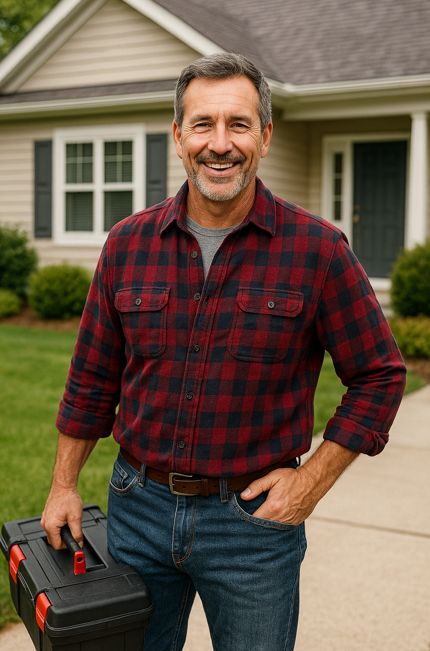Tuning into Goodman’s Electric Lineup
Look, Goodman isn’t sloppy with their models—they’ve thoughtfully designed the MBVK, the MBVC, MBVB, and even wall‑mount AWUF units for different needs. But let’s focus on what really matters. The MBVK gives you variable‑speed airflow, stellar heat output, and installs neatly in ducts. The MBVC kicks it a notch up: same footprint, but with a smarter ECM motor and quieter operation. It’s smoother, more efficient—ideal for folks pairing it with a mini‑split or energy recovery ventilator. HVAC Talk posters often say the MBVC runs “like a whisper while delivering serious output.”
Digging into the Details: MBVK vs MBVC
Blower Motor & Noise
MBVK uses an ECM blower too, but MBVC has a brushless variant that ramps even more quietly. Think library quiet vs quiet. If your unit sits close to living areas, the MBVC’s worth the bump.
Efficiency Gains
Both hit near 100% efficiency, but MBVC’s motor sips a bit less juice during low‑speed cycles. According to ENERGY STAR, variable‑speed ECMs can reduce energy use by up to 30% compared to single‑speed PSC systems.
Price Premium
MBVC usually carries a higher sticker—expect $200–$300 more for motor upgrades. Is it worth it? That’s up to your priorities. But variable‑speed is future‑proof in most HVAC pros’ eyes.
Space‑Saving Goodman Alternatives
If ducted setups aren’t your vibe, Goodman rolls out wall‑mount options like the AWUF or AWUT models. These are compact, self-contained units you hang on exterior walls—perfect for apartments or sheds. They don’t need ductwork, just a hole in the wall and wiring. But they also don’t output enough BTUs to heat larger homes. Compare that to the MBVK, sized for whole‑house comfort. If you're heating more than a few hundred square feet, those wall‑mounts feel cramped fast.
Hybrid Systems: Heat Pump + Electric Furnace
This is where the magic happens. Many homeowners pair an inverter-driven heat pump with the Goodman electric furnace acting as backup—especially in cold climates. When temps drop below ~30 °F, heat pumps lose punch. At that point, the electric furnace kicks in without skipping a beat, keeping comfort uninterrupted.
ENERGY STAR recommends this setup for regions with winter extremes and no gas line access. Plus, hybrid systems can cut your operating costs by balancing efficiency with warmth. Energy.gov has great guidance on how heat pumps and backup heating work together seamlessly.
Matched Systems vs DIY Mix‑and‑Match
It’s tempting to mix your own parts—"I’ll just pair that new furnace with an old coil!" But don’t skip the AHRI match certification. It ensures proper airflow, refrigerant charge, and system longevity. Units installed without matching can suffer poor performance, higher energy use, and potentially void warranties.
Check the AHRI Certified Directory to make sure your coil, furnace, and heat pump ride together like a well‑tuned band. Don’t assume compatibility just 'cause same brand.
Real Homeowner Scenarios
Cold‑climate installer in Minnesota: They pair MBVK with a dual‑fuel heat pump—runs cheap most days, switches to electric heat during deep freeze. They control with zoned ecobee thermostats to optimize both systems. Bills still sting a little in January, but overall comfort and reliability are top‑notch.
Rural off‑grid cabin in Vermont: No propane line, no gas bill. They run the Goodman furnace off solar+generator winter backup. It costs more per kWh, but the install was easier, and there’s no fuel storage or delivery headaches. They value simplicity and independence.
Retrofit in Atlanta urban home: They already had ductwork and a coil but no gas line. They installed an MBVC for quiet multi-speed performance. HVAC tech said it sounds “more like central AC than a furnace” when heating.
Pro Tips for Choosing the Right Model
-
Want quiet performance? Go MBVC—worth it for living‑area installs
-
On a budget, and noise isn’t a factor? MBVK is solid—efficient and powerful
-
Heating a whole home? Skip wall units, they’re not built for that
-
Considering hybrid? Make sure you’ve got proper load calculations and programmable thermostats to optimize switching
If you want to deep-dive into heat pump synergy, check out ACCA Manual D & J for sizing guides. Good designers always start with load calculations—skip that, and you’re gambling with comfort.
Mike’s Takeaway
You’ve got options. Goodman’s got models tailored from studio apartments to family homes with heat-pump backup. Think about noise, performance, and future expansions. And don’t forget—matched systems matter.
If I had to wrap it up: go MBVK for reliability, MBVC for refinement, and always pair up with heat pump if you plan to stay warm and lean about your bills. That’s how you get good heat and smart savings in one clean package.
🧰Stay smart, stay comfortable, and I’ll catch you next time! - Mike🧰







